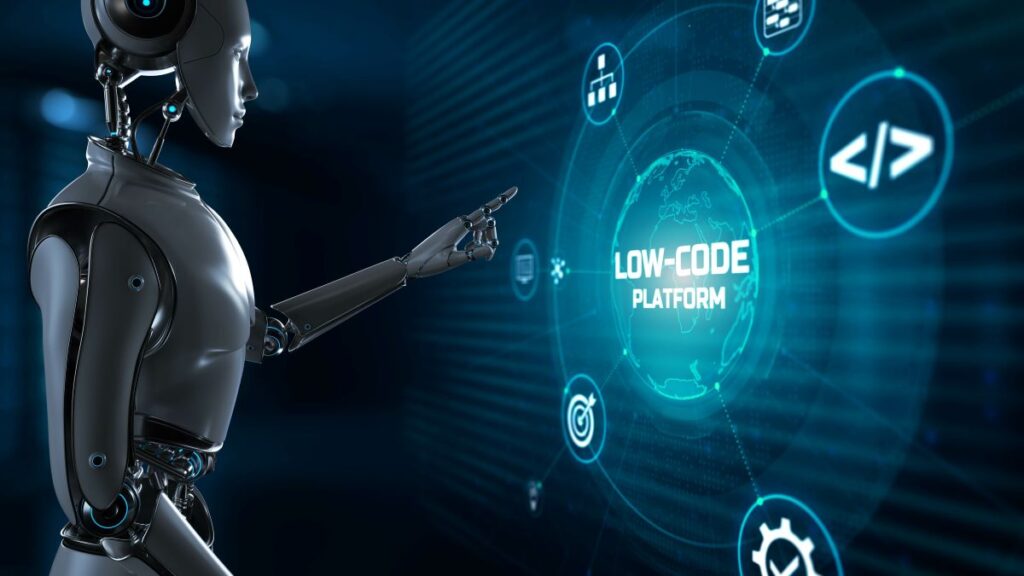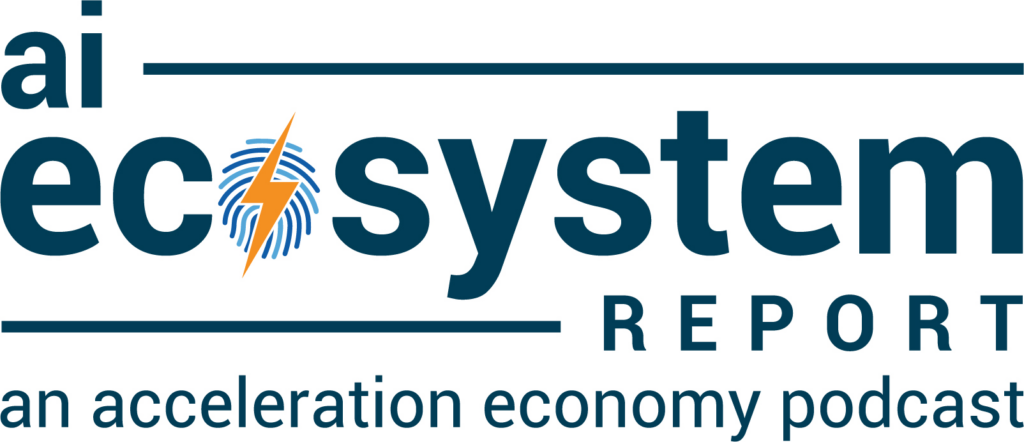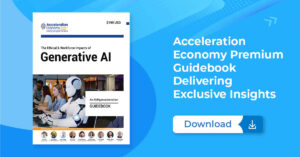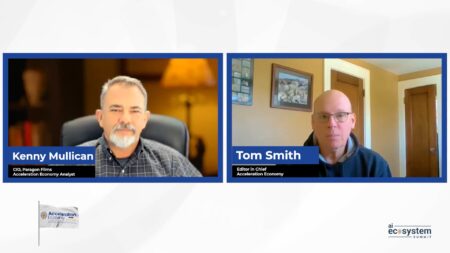The lines between artificial intelligence (AI) and low-code development are blurring. For years, there’s been a movement toward increased software development automation through low-code processes. Modern low-code/no-code platforms and tools can automate much of the developer experience and open the doors for less-technical audiences to build functional applications.
With the advent of powerful generative artificial intelligence (AI), the low-code realm is set to evolve even further. New AI is more likely to complement low-code platforms than replace them and to become more enmeshed within existing software development platforms. For example, low-code providers can eliminate the hassle of integrating large language models (LLMs). AI can accelerate code generation and code validation within low-code environments, and low-code could help prepare data and train custom machine learning (ML) models.
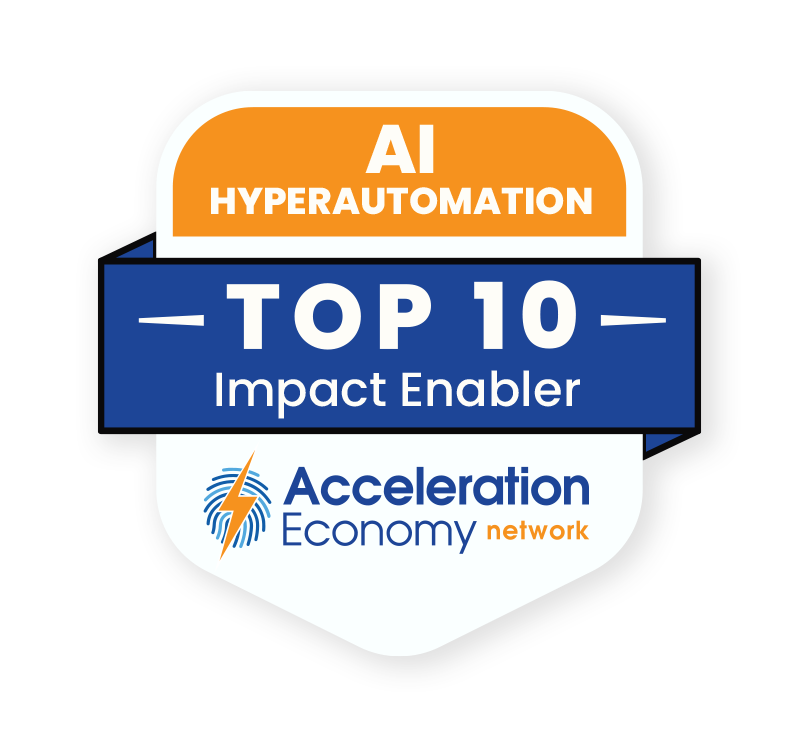
Which companies are the most important vendors in AI and hyperautomation? Check out the Acceleration Economy AI/Hyperautomation Top 10 Shortlist.
Ways Low-Code And AI Are Converging
AI and low-code are converging in multiple ways. Here are some of these areas and a few examples of them in practice.
- Using AI to generate code suggestions: The most obvious way AI can accelerate low-code programming is through AI-assisted code development (AICD). Given natural language prompts, LLMs trained on large datasets can suggest new code snippets or components within low-code environments.
- Using AI to suggest templates for application flows: AI trained on common builds within a software development platform could offer logical flows that speed the time to deliver new features. Predictive AI assistants could suggest additional components, new databases to integrate, or different architectures within the context at hand.
- Using AI to encourage coding best practices: AI can also be used to auto-suggest features, detect issues, and offer remediation advice. This could help spot errors in code, validate that code conforms to best practices, and suggest optimizations that avoid performance bottlenecks.
- Using low-code platforms to train new AI: Low-code can build new AI functionality. Low-code could help data scientists prepare unstructured data for AI. Also, these platforms could generate custom algorithms based on internal knowledge bases and private data. This would help build more contextually aware, bespoke AI.
- Using low-code to build AI-enabled applications: Low-code is an ideal spot to bake AI into applications. Low-code components are increasingly AI-aware in areas including natural language, voice communications, and image recognition. For example, an AI-enabled function could be dragged-and-dropped to quickly spin up a conversational chatbot.
- Using low-code to speed API integration: AI services such as sentiment analysis, facial recognition, or voice-to-text are often processed through cloud-based application programming interfaces (APIs). But integrating these libraries can be challenging, even for seasoned programmers. Low-code platforms can act as a shim to abstract the complexity of integrating with API-driven AI services.
- Using AI to inform application security: Software development platforms can also take advantage of AI to improve runtime security by creating a model of past behaviors and searching for deviations. (However, not all low-code platforms provide access to historical data or production logs.)
Development Platforms Adopting AI
So, now that you know the potential of AI in low-code, you may be asking how it is being adopted in practice. Most of the major low-code development platforms are already jumping on the AI bandwagon by integrating LLM APIs and maturing their own AI. Here are some specific examples of how development and automation platforms are integrating AI into their offerings.
- Microsoft Power Platform: Microsoft recently announced the inclusion of ChatGPT into its Power Platform. Microsoft has also debuted technology to enable developers to create Copilots of their own. Clearly, Microsoft is heavily invested in the future of AI enablement, and the trajectory of its developer-facing platforms reflects this commitment.
- Mendix: Mendix Assist provides AI-assisted development with the help of two bots. MxAssist Logic Bot is trained on millions of anonymized “microflows,” enabling it to suggest the next-best actions and potential configurations. MxAssist Performance bot offers recommendations for auto-fix capabilities.
- Outsystems: OutSystems provides numerous ways to build AI into applications using prebuilt AI components. OutSystems has a ChatGPT connector, and its AI can suggest application flows and validate outputs, among other functions.
- Mulesoft: Integration with APIs will be necessary to automate data collection that informs real-time AI. Integrators like Salesforce’s Mulesoft will help make it easier to integrate with popular APIs and sync up AI functionality. Salesforce also has Einstein GPT, a generative AI for customer relationship management (CRM).
The Lines Are Becoming Blurry
There are many parallels between low-code and AI. And the surge of new AI will undoubtedly augment the low-code experience. It will enable low-code platforms to offer more conversational code generation and plug-and-play AI components.
AI will also continue to enhance the process automations that low-code platforms deliver and bring more predictive intelligence into the development workflow. That should lead to increased efficiency. “With AI and automation tools, I think we could be in store for quantum leaps of productivity,” says Acceleration Economy practitioner analyst and 4x CEO Tony Uphoff.

Arguably, LLMs like ChatGPT fit under the low-code umbrella since they offer code-free capabilities to accelerate programming. And just as the AI wave is inevitable, so is the low-code wave: Gartner predicts that by 2024, 65% of applications will be developed using low-code methods. These platforms already help democratize software development and could be a doorway to democratize access to programmatic AI and AI-enabled development.
However, as the lines between AI and low-code become blurred, tech leaders must remain vigilant with an eye to both the security repercussions and the hindrances of automation in general. Without governance, low-code can introduce security risks, especially concerning citizen development. And AI too presents risks since it can hallucinate and produce faulty code. Therefore, as complexity is masked, it will take new talent to weigh risk and reward in this new AI-fueled, codeless paradigm.

